Discover the Beauty and Deep Meaning of Delphinium Flowers
Delphinium is a plant that boasts brilliant beauty, with its most prominent blooms appearing in summer. Belonging to a genus of over 300 species, Delphinium elatum is the most common and can be easily identified by its height of 5 to 6 feet and width of about 2 feet. The flowers typically feature a distinctive blue color but also come in shades of pink, purple, and white. Some species even have contrasting flower centers, creating mesmerizing semi-double or double blossoms.
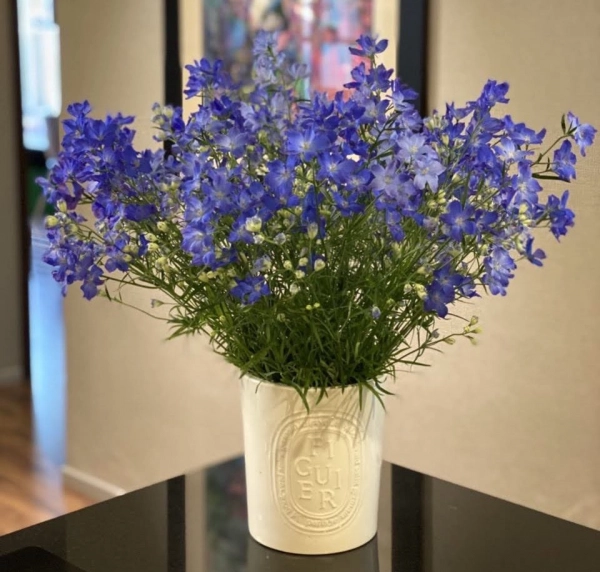
This flower is often used to decorate garden borders, adding a lively touch to your outdoor space. Although the plant's lifespan is about three to five years, Delphinium thrives best in regions with long, cool springs. The seeds of Delphinium have varying germination rates, ranging from seven to 21 days, and bloom from late spring to early summer, showcasing irresistible beauty throughout the season.
The Sacred Meaning of Delphinium
Delphinium is not only remarkable for its beauty but also carries profound meanings. In many cultures, Delphinium symbolizes eternal love, making it a popular choice for weddings, especially in Europe, where its blooming season coincides with the wedding season. These graceful and dazzling flowers are often used for decorating housewarming parties and anniversaries, offering blessings and hopes for a life filled with joy and happiness for the homeowners.
The delicate and soft appearance of Delphinium petals also represents grace and purity. However, beneath this gentle exterior lies a strong vitality, creating a unique blend of tenderness and resilience. Delphinium is also a symbol of shyness and modesty, much like the beauty of a young girl in bloom, radiating with timid allure on the summer fields.
With its flowering season in July, Delphinium acts as a "natural clock," signaling the arrival of summer with fresh colors and a reminder that the season of life and abundance has come.
The Meaning of Pink Delphinium: Romance
Pink Delphinium symbolizes romance and gentle feelings. It is a perfect choice to gift a loved one, expressing special affection in your life.
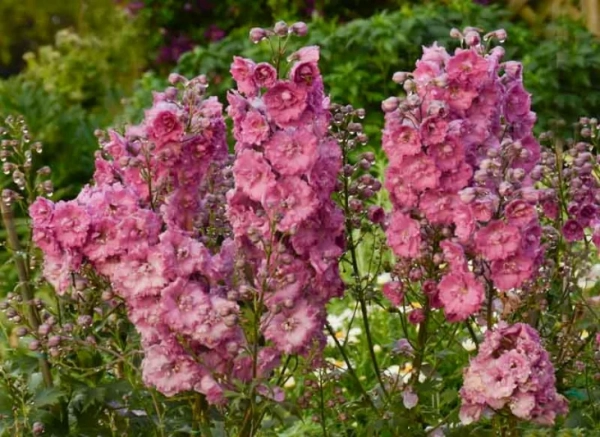
The Meaning of White Delphinium: Purity and Elegance
White Delphinium represents sincere love and symbolizes joy in life. These flowers are often seen at weddings and can be gifted as a token of compassion and respect.
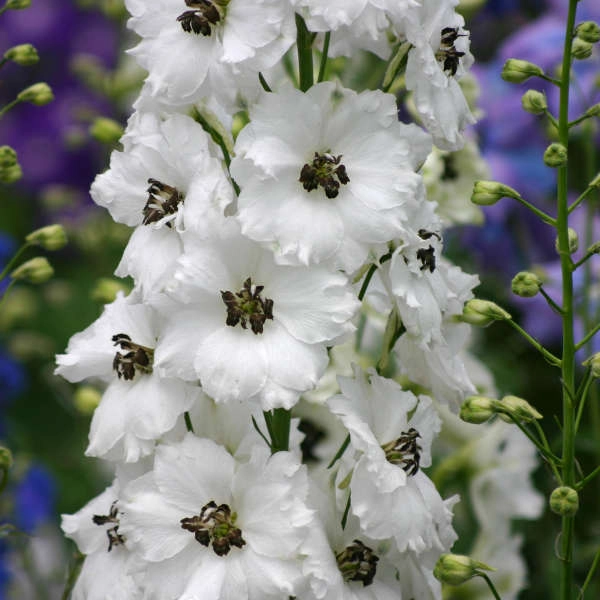
The Meaning of Blue Delphinium: Elegance and Trust
The blue Delphinium signifies support and trust. It is an ideal gift for friends you deeply trust and wish to show your unwavering support.
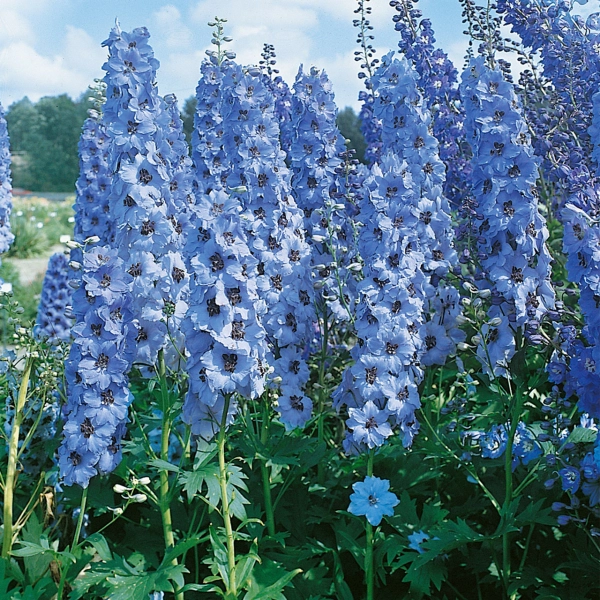
The Meaning of Purple Delphinium: Loyalty
Purple Delphinium symbolizes unwavering loyalty and a strong bond, often seen as a representation of a beautiful first love.
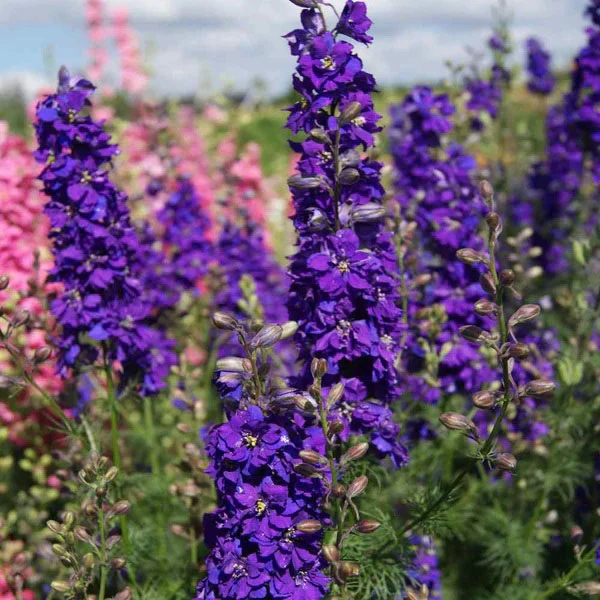
Effective Guide to Planting and Caring for Delphinium
Successfully growing Delphinium depends on selecting the right location and thoroughly preparing the plant. Here are the steps to help your Delphinium thrive:
- Timing: Plant Delphinium in the spring in a spot with morning sunlight and light afternoon shade, especially in warmer climates. Loamy, well-draining soil is ideal for the plant's growth.
- How to Sow Seeds: Delphiniums grow best when transplanted from seeds that have been germinated indoors. Start sowing seeds indoors about 10 weeks before the last spring frost. The seeds will germinate in 21 to 28 days, and if you chill the seeds in the refrigerator for a few weeks before planting, germination will occur more quickly.
- How to Transplant Seedlings: When outdoor temperatures are stable, not falling below 50°F (10°C), you can move the seedlings to the garden. Be sure to dig a hole twice the size of the root ball and keep the soil moist until the plant is well-established.
Caring for Delphinium
Light
Delphiniums require at least 6 to 8 hours of sunlight per day to produce the best blooms. However, avoid exposing the plant to intense, direct sunlight for extended periods. On particularly hot days, choose a spot with some light afternoon shade.
Soil
The plant thrives in loamy, well-draining soil with a slightly acidic pH, ideally between 6.5 and 7.0. Incorporate organic compost into the soil to provide the plant with adequate nutrients.
Watering
Water regularly, keeping the soil moist but not waterlogged. Water at the base of the plant, avoiding the leaves to prevent fungal issues. A mulch layer of 2 to 3 inches can also help maintain soil moisture.
Temperature and Humidity
Delphiniums prefer cooler climates, with ideal spring and summer temperatures ranging from 70°F to 80°F (21-27°C). The plant does not tolerate high humidity and excessive heat, which can make it prone to mildew.
Fertilizing
Delphiniums are heavy feeders, so regular fertilizing is necessary. Use organic compost or a balanced fertilizer like 10-10-10 when planting. Applying a second round of fertilizer mid-season can extend the bloom time and encourage a second flowering later in the season.
Pruning and Propagating Delphinium
1. Pruning
Remove spent flowers to encourage the plant to develop additional side shoots. Once the main flowering season has ended, cut the plant back to about 2 inches from the ground to promote a second bloom in late summer or early fall.
2. Propagation
Delphinium can be propagated by dividing the root clumps or by taking cuttings. This method is most successful when done in the spring, as the plant begins to sprout. However, seedlings that self-sow from seeds may not retain all the characteristics of the parent plant, as many popular varieties are hybrids.
Popular Delphinium Varieties
- Delphinium elatum 'Magic Fountain': Grows to about 2.5 to 3 feet, with flower colors including white, deep blue, and pink.
- Delphinium elatum 'Centurion': Reaches around 3 feet with semi-double flowers in white, purple, and blue.
- Delphinium x belladonna 'Blue Donna': Features bright blue flowers and grows from 2.5 to 3 feet tall.
Propagating by Seeds
To propagate by seeds, sow them in winter or early spring. Storing the seeds in the refrigerator before planting can help speed up germination. When sowing, cover with a thin layer of soil and keep the soil consistently moist until the seeds germinate. Then, transplant the seedlings outdoors once they are strong enough.
How to Plant and Repot Delphinium
Delphiniums grow vigorously and tend to spread quickly, disliking overcrowded conditions. Therefore, when planting in pots, choose a pot that is large enough, at least twice the size of the plant, and ensure it has plenty of drainage holes to prevent waterlogging. Avoid materials like clay or ceramic, as they drain water too quickly and can dry out the soil.
Dwarf varieties are the most suitable for pot planting, but you can still grow taller varieties if you provide stakes and good wind protection. When planting in pots, water regularly and apply balanced fertilizer every 2-3 weeks to maintain healthy growth.
Steps to Plant in Pots
- Fill the pot with potting soil and organic compost or fertilizer.
- Create a planting hole in the center, then place the plant in, keeping the same depth as in its original pot.
- Cover the base with soil and water thoroughly, avoiding wetting the leaves.
- Place the pot in a spot that receives morning sun and afternoon shade to promote healthy growth.
Caring for Delphinium During Winter
Although Delphiniums can tolerate frost, cold and wet soil can harm the plant. Use mulch during winter to prevent damage. For potted plants, there’s no need to bring them indoors, but it's recommended to protect them from strong winds and excessive moisture.
Common Pests in Delphinium
Delphiniums are prone to attacks from slugs, aphids, spider mites, leaf miners, and stem borers. Symptoms include undeveloped blooms, deformed flowers, wilting, or blackened leaves. Regularly inspect your plants and treat any problems early to prevent the spread of pests.
Fungal diseases, leaf spots, and root nematodes are also common issues, especially when humidity is high. To prevent these, avoid overhead watering and keep the planting area clean and well-ventilated.
Encouraging Delphinium to Bloom
Delphiniums typically bloom in spring and summer, from June to September. To extend the blooming period, ensure the plant receives at least 6 hours of sunlight each day and maintain soil moisture. Fertilize regularly but avoid excess nitrogen, as it can promote foliage growth at the expense of flowers.
To encourage a second bloom, cut the plant back to about 2 inches from the ground after the first flush of flowers fades. Deadheading spent flowers also helps stimulate more blooms throughout the season.
Common Issues with Delphinium
- Overcrowding: Delphiniums grow quickly and don’t tolerate crowding. Overcrowded conditions can reduce air circulation, leading to powdery mildew and other fungal diseases. Prune or divide the plant in early spring to maintain good airflow.
- Yellowing Leaves: Delphinium leaves are usually a blue-green color. If the leaves turn yellow, it could be due to overwatering or a nutrient deficiency. Ensure the pot has good drainage and fertilize correctly.
- Drooping Plants: For tall varieties, the hollow, heavy stems can topple over and may require stakes or trellises for support. Drooping can also be a sign of insufficient sunlight, so make sure the plant gets adequate light during the day.
Proper care will help your Delphinium grow strong and produce vibrant blooms throughout the year.
Delphinium is not only a wonderful addition to any garden with its captivating beauty and diverse colors, but it also holds deep meanings of love, purity, and fidelity. With the right care, your plant will thrive and produce beautiful flowers all season long. Following this detailed guide, you can easily create a lush and inviting space with Delphiniums in your garden.
Tags: Indoor Ornamental Plants | Outdoor Ornamental Plants | Bonsai Plants | Aquatic Ornamental Plants | Miniature Ornamental Plants |











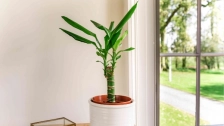

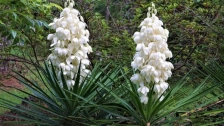





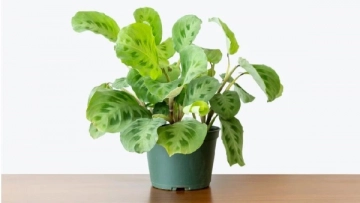

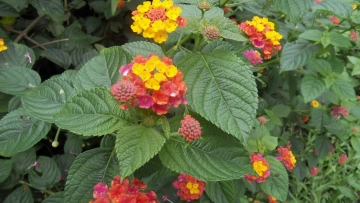
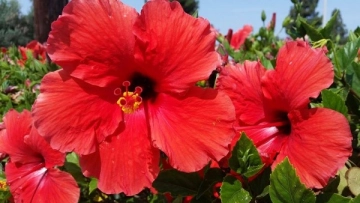
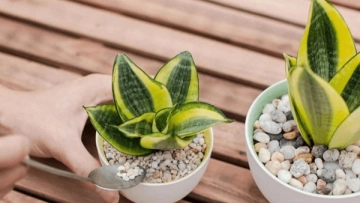
LEAVE A REPLY
Your email address will not be published. Required fields are marked *